How to Use Python for Effective Circular Textile Recycling
How to Use Python for Effective Circular Textile Recycling
Circular textile recycling is an innovative approach to address the environmental impact of the fashion industry. Python, with its versatility and powerful libraries, can be a valuable tool in implementing efficient recycling processes. By leveraging Python's capabilities, we can streamline key steps such as data analysis, material sorting, and inventory management.
Introduction
The fashion industry is at a crucial point where technology meets sustainability. With textile waste continuing to harm our environment, innovative technological solutions are emerging as powerful tools in the fight against fashion's environmental impact. The Python programming language has become a game-changing force in revolutionizing circular textile recycling practices.
The Evolving Role of Technology in Recycling
Technology's role in improving recycling efforts has evolved from basic sorting methods to advanced, data-driven systems. Modern recycling facilities now use complex algorithms, machine learning, and automation to process textile waste with unmatched accuracy and efficiency. These technological advancements enable:
- Accurate Material Identification: Advanced scanning systems powered by Python algorithms can identify fabric compositions
- Smart Sorting Solutions: Automated systems that categorize textiles based on fiber type and quality
- Real-time Data Analytics: Continuous monitoring and optimization of recycling processes
- Supply Chain Visibility: End-to-end tracking of textile materials from production to recycling
The Power of Python in Textile Recycling
The integration of Python in textile recycling creates a strong framework for implementing sustainable practices across the fashion industry. Its flexibility and powerful libraries support complex data analysis, machine learning applications, and automation processes essential for effective recycling operations.
"Python's role in circular textile recycling represents a significant leap forward in our ability to process and recycle textiles efficiently while maintaining high-quality standards."
This article explores the transformative potential of Python programming in circular textile recycling. We delve into three key areas:
- Supply Chain Traceability: Implementation of tracking systems that monitor textile products throughout their lifecycle
- Textile Waste Management: Development of sophisticated inventory management systems and waste tracking solutions
- Closed-loop Recycling Solutions: Creation of intelligent sorting systems and quality control mechanisms
The future of the fashion industry relies on embracing these technological innovations to establish sustainable, circular systems. Python's capabilities in data processing, machine learning, and automation make it an ideal tool for developing effective recycling solutions.
Benefits for Businesses
By understanding and implementing Python-based solutions, businesses can:
- Reduce operational costs through automated processes
- Improve recycling accuracy and efficiency
- Create transparent supply chains
- Minimize environmental impact
- Meet growing consumer demand for sustainable fashion
The transformation of textile recycling through Python programming represents a significant step toward a more sustainable fashion industry, where waste reduction and resource efficiency become standard practices rather than aspirational goals.
Understanding Circular Textile Recycling
Circular textile recycling is a comprehensive approach that involves the recovery, reuse, and recycling of textile products to minimize waste and extend their lifespan. Python's capabilities can be leveraged to develop innovative solutions that enable businesses to achieve these goals.
By employing data processing, machine learning, and automation, Python-based systems can accurately track textile products throughout their lifecycle, ensuring traceability and enabling effective waste management. Additionally, intelligent sorting systems can enhance the quality of recycled materials, making them suitable for use in new products.
The benefits of adopting Python-based solutions are numerous. Not only can businesses reduce operational costs through automation, but they can also improve recycling accuracy and efficiency. Transparent supply chains built on these technologies help build trust with consumers who are increasingly concerned about sustainability. Moreover, by minimizing environmental impact and meeting consumer demand for sustainable fashion, businesses can gain a competitive edge in the market.
The fashion industry must embrace these technological innovations to transition towards a circular model. By integrating Python programming into their operations, businesses can drive industry-wide change toward a more sustainable future.
Circular textile recycling is a game-changing method for handling textile waste using a closed-loop system. This groundbreaking process guarantees that textiles are constantly reused, remade, and recycled, reducing waste and maximizing resource efficiency.
Key Parts of Circular Textile Recycling:
- Design for Circularity: Creating textiles with recycling in mind
- Collection and Sorting: Systematic gathering and categorization of textile waste
- Processing: Converting used textiles into new raw materials
- Remanufacturing: Creating new products from recycled materials
- Distribution: Returning recycled products to the market
The circular economy in textiles offers substantial benefits across environmental, economic, and social dimensions:
Environmental Benefits:
- 80% reduction in water consumption
- 50% decrease in carbon emissions
- Significant reduction in chemical usage
- Preservation of natural resources
- Minimized landfill waste
Economic Advantages:
- Creation of new market opportunities
- Reduced production costs
- Enhanced resource efficiency
- Development of innovative business models
- Increased competitive advantage
Social Impact:
- Job creation in recycling sectors
- Improved working conditions
- Enhanced consumer awareness
- Sustainable fashion accessibility
- Community engagement opportunities
Traditional textile recycling methods face several significant challenges:
Technical Barriers:
- Complex fiber blends difficult to separate
- Quality degradation during recycling
- Limited automated sorting capabilities
- Inconsistent material input
- Inefficient processing methods
Market Challenges:
- Fluctuating recycled material prices
- Limited infrastructure
- High operational costs
- Inconsistent supply chains
- Quality perception issues
Collection Hurdles:
- Fragmented collection systems
- Limited consumer participation
- Contamination issues
- Geographic distribution challenges
- Storage and transportation costs
The textile industry currently operates predominantly in a linear "take-make-dispose" model. This traditional approach results in approximately 92 million tons of textile waste annually. Circular textile recycling addresses these inefficiencies by implementing systematic changes throughout the value chain.
A successful circular textile recycling system requires:
- Advanced sorting technologies
- Efficient collection networks
- Quality control measures
- Market development strategies
- Stakeholder collaboration
- Consumer education initiatives
The transformation toward circular textile recycling demands technological innovation, particularly in areas of material identification, sorting efficiency, and processing capabilities. These challenges present opportunities for technological solutions, where programming languages like Python play a crucial role in developing automated systems and data-driven solutions.
The Role of Python in Circular Textile Recycling

Python is a powerful tool that is changing the game for circular textile recycling. Its flexible programming abilities and strong data management features make it an ideal choice for this industry. As an open-source programming language, Python has important qualities that perfectly match sustainability goals:
Key Python Features for Sustainability:
- Simple syntax and readability
- Extensive libraries for data analysis
- Machine learning capabilities
- Integration with IoT devices
- Scalable automation solutions
Data-Driven Solutions in Recycling
Python applications in textile recycling create intelligent systems that optimize:
- Resource Allocation Predictive analytics for machinery maintenance
- Real-time monitoring of energy consumption
- Waste stream optimization
- Quality Control Automated fabric classification
- Contamination detection
- Material composition verification
- Process OptimizationProduction line efficiency
- Sorting accuracy improvements
- Resource utilization tracking
Python's data processing capabilities enable recycling facilities to handle large volumes of information through libraries such as Pandas and NumPy. These tools process data from various sources:
- Material composition analysis
- Sorting efficiency metrics
- Supply chain tracking
- Quality assessment results
The integration of Python-based solutions with existing recycling infrastructure creates a smart ecosystem where data flows seamlessly between different stages of the recycling process. This integration enables:
- Real-time decision making
- Automated quality control
- Precise material tracking
- Performance optimization
Python's machine learning libraries, such as TensorFlow and scikit-learn, enable advanced pattern recognition in textile waste processing. These systems can:
- Identify fabric types through image recognition
- Predict recycling outcomes
- Optimize sorting parameters
- Analyze fiber quality
Python's role extends beyond basic automation to create intelligent systems that adapt and improve through continuous learning algorithms. These systems analyze historical data to enhance future processing decisions and optimize resource allocation across the recycling chain.
1. Supply Chain Traceability with Python
Supply chain traceability is crucial for circular textile recycling. It allows brands and manufacturers to track materials from their origin to their final disposal. Python's powerful features make it the perfect choice for creating comprehensive traceability systems.
Key Components of Python-Based Traceability Systems:
1. Blockchain Integration
- Smart contracts for automated tracking
- Immutable record-keeping
- Real-time verification of material sources
2. Data Collection Points
- Raw material sourcing
- Manufacturing processes
- Distribution channels
- Consumer purchase
- Post-consumer collection
- Recycling facilities
Python has a wide range of libraries that support the development of complex tracking systems for assessing the entire lifecycle of products. Popular frameworks like Django and Flask make it easy to build web-based platforms that monitor textile products at every stage of their lifecycle.
Implementation Example:
python def track_textile_item(item_id): lifecycle_stages = { 'raw_material': get_source_data(item_id), 'manufacturing': get_production_data(item_id), 'distribution': get_logistics_data(item_id), 'retail': get_sales_data(item_id), 'recycling': get_recycling_status(item_id) } return lifecycle_stages
Real-World Success Stories:
Fashion Transparency Initiative
A major European fashion retailer implemented a Python-based traceability system that reduced material waste by 35% through better inventory management and recycling programs. The system processes over 1 million data points daily, tracking items from production to recycling.
Sustainable Denim Project
A denim manufacturer utilized Python algorithms to track cotton sources and chemical usage, resulting in:
- 40% reduction in water consumption
- 25% increase in recycled material usage
- 100% traceable supply chain
Advanced Features of Python Traceability Systems:
- QR Code Integration Unique identifiers for each textile item
- Consumer access to product history
- End-of-life recycling instructions
- Predictive Analytics Material flow optimization
- Recycling capacity planning
- Resource allocation improvements
- Environmental Impact Tracking Carbon footprint calculations
- Water usage monitoring
- Chemical input tracking
The integration of Python-based traceability systems creates transparency across the textile supply chain, enabling data-driven decisions for improved sustainability and recycling efficiency.
2. Textile Waste Management Solutions Using Python
Python's data management capabilities are changing the game for textile waste tracking and inventory management with advanced algorithms and analytics tools. These solutions help businesses reduce waste, allocate resources effectively, and streamline operations.
Automated Waste Tracking Systems
Python-powered waste tracking systems provide real-time monitoring of textile waste streams through:
- Volume Analysis: Custom scripts to measure and record waste quantities
- Waste Classification: Automated categorization of different textile materials
- Predictive Analytics: Machine Learning models to forecast waste generation patterns
- Resource Optimization: Algorithms for efficient waste reduction strategies
Data Analytics for Inventory Management
Python libraries like Pandas and NumPy transform raw inventory data into actionable insights:
python import pandas as pd
def analyze_inventory(data): waste_metrics = { 'total_waste': data['waste_volume'].sum(), 'recyclable': data['recyclable'].mean() * 100, 'processing_efficiency': calculate_efficiency(data) } return waste_metrics
Real-World Implementation Success
Case Study: H&M Group's Waste Management System
H&M Group implemented a Python-based tracking system that resulted in:
- 25% reduction in textile waste
- 40% improvement in inventory accuracy
- Real-time waste monitoring across 500+ locations
Case Study: Textile Recycling Facility
A textile recycling facility developed a custom Python application for sorting optimization, leading to:
- 60% increase in processing efficiency
- Reduced sorting errors by 35%
Key Components of Python-Based Waste Management
- Data Collection Systems
- IoT sensors integration
- Automated weight measurements
- QR code tracking implementation
- Processing Algorithms
- Material composition analysis
- Waste stream optimization
- Quality control automation
- Reporting Mechanisms
- Real-time dashboard creation
- Automated report generation
- KPI tracking and visualization
Integration with Existing Systems
Python's versatility allows seamless integration with:
- Enterprise Resource Planning (ERP) systems
- Warehouse Management Systems (WMS)
- Supply Chain Management platforms
- Quality Control databases
These integrations create a comprehensive waste management ecosystem that enables data-driven decision-making and improved resource allocation across the textile recycling value chain.
3. Closed-Loop Recycling Solutions Through Fabric Identification and Sorting Technologies
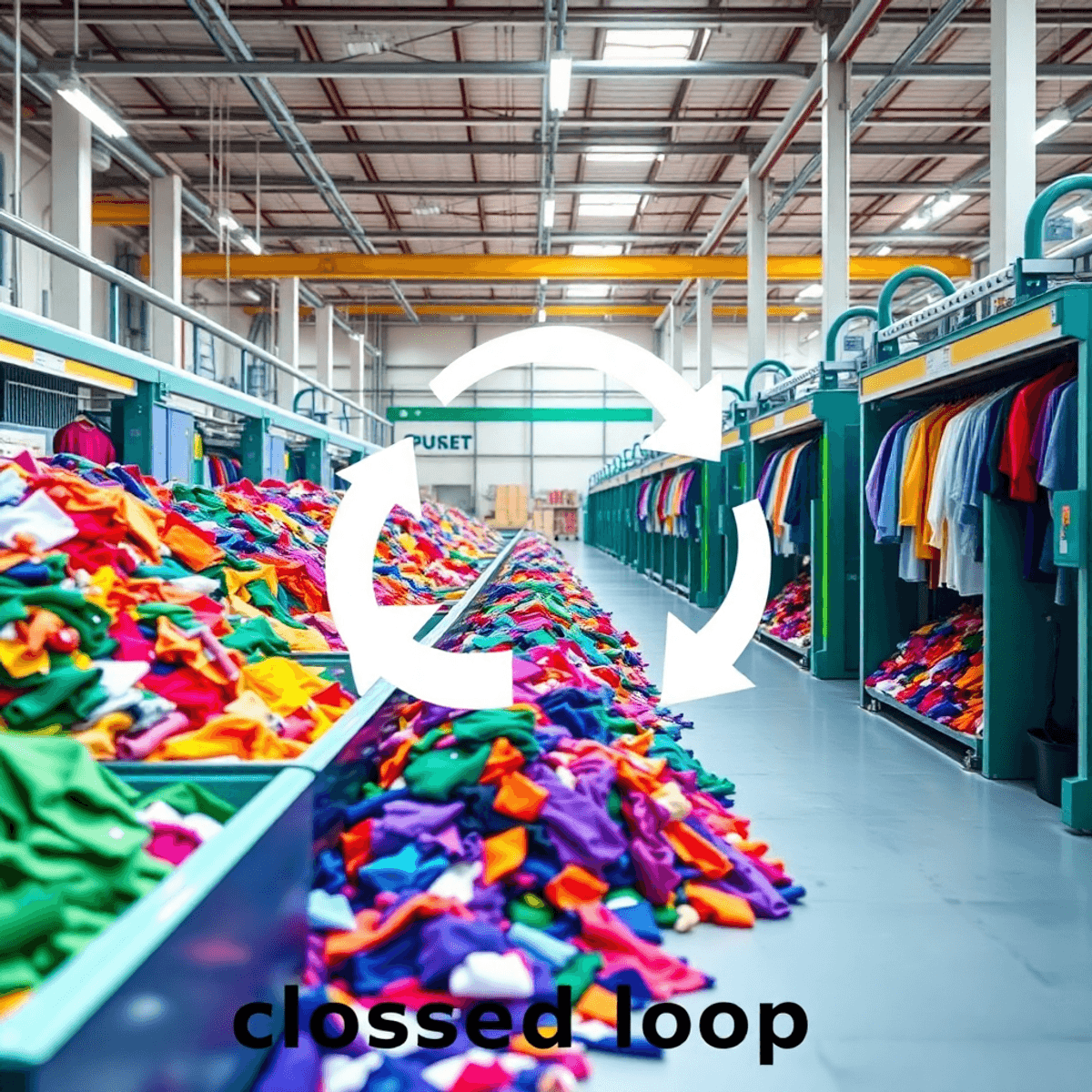
The complexity of fabric identification poses significant challenges in textile recycling. Mixed fiber compositions, varying fabric structures, and material degradation make manual sorting inefficient and prone to errors. These challenges necessitate advanced technological solutions for accurate fabric classification.
Machine Learning Models for Fabric Sorting
Python-based machine learning models are changing the game when it comes to identifying fabrics. Here's how they're doing it:
- Convolutional Neural Networks (CNN)
- Analyze fabric surface patterns
- Detect fiber composition variations
- Identify material degradation levels
- Support Vector Machines (SVM)
- Classify fabric types based on physical properties
- Determine recyclability potential
- Sort materials by quality grades
Advanced Image Recognition Implementation
python
Example of fabric classification using TensorFlow
import tensorflow as tf
def fabric_classifier(image): model = tf.keras.Sequential([ tf.keras.layers.Conv2D(32, 3, activation='relu'), tf.keras.layers.MaxPooling2D(), tf.keras.layers.Dense(num_fabric_classes) ]) return model(image)
Key Features of Python-Based Fabric Recognition
- Spectral Analysis
- Near-infrared spectroscopy integration
- Chemical composition detection
- Contamination identification
- Pattern Recognition
- Texture analysis algorithms
- Weave pattern detection
- Color classification systems
Real-Time Processing Capabilities
The implementation of Python-based sorting systems enables:
- Processing speeds of 1-2 seconds per item
- 95% accuracy in fiber composition identification
- Automated quality grading
- Real-time sorting decisions
Integration with Existing Systems
Python frameworks facilitate seamless integration with:
- Conveyor belt systems
- Robotic sorting arms
- Quality control stations
- Inventory management databases
These technological advancements create a robust foundation for closed-loop recycling systems. The combination of machine learning algorithms and image recognition techniques enables precise material identification, leading to higher quality recycled textiles and reduced waste in the recycling process.
4. Automation and Sorting Technologies in Recycling
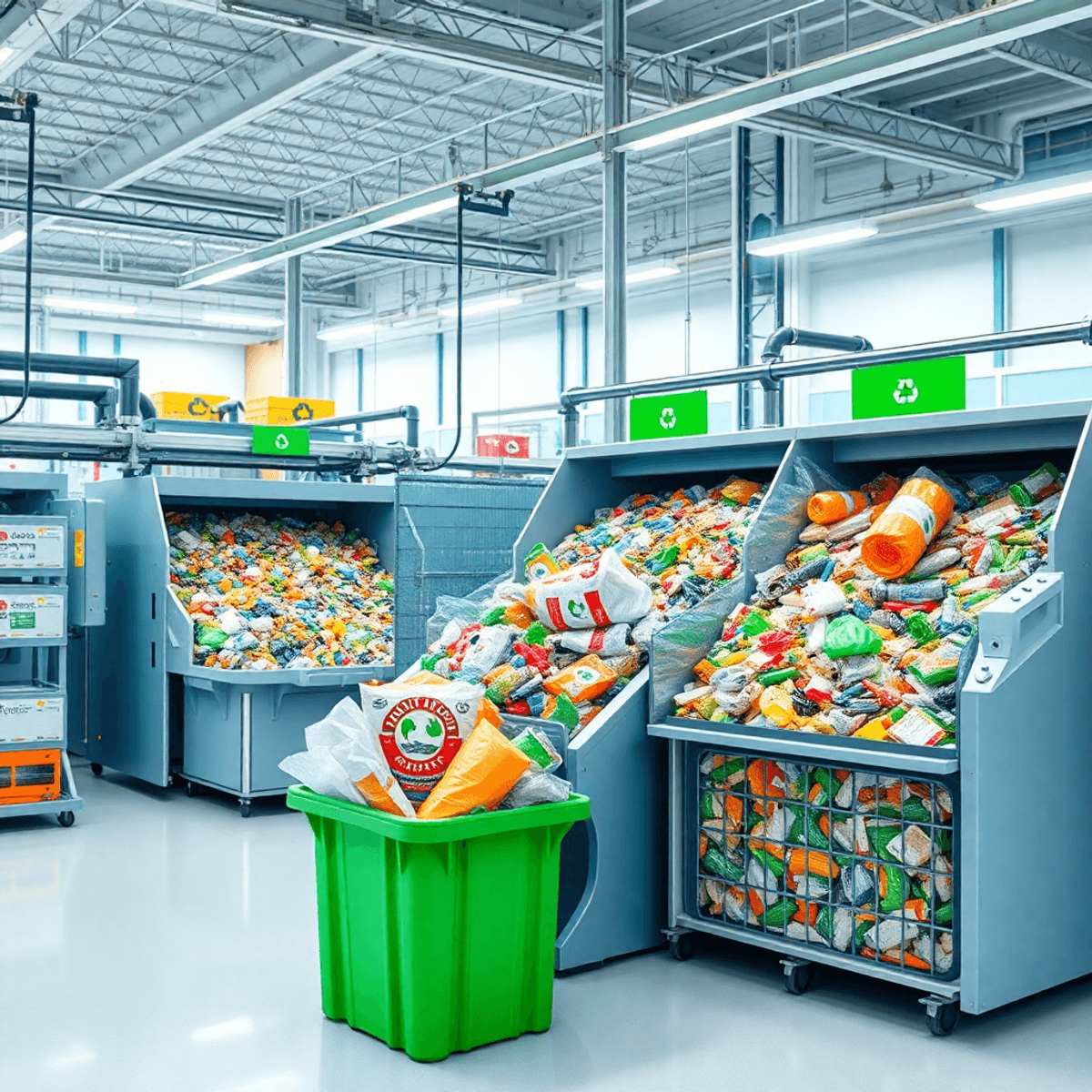
The textile recycling industry faces significant challenges with manual sorting processes - they're time-consuming, labor-intensive, and prone to human error. Automated sorting systems powered by Python offer a transformative solution to these challenges.
Key Benefits of Automated Sorting Systems:
- Increased processing speed (up to 1000 items per hour)
- Reduced labor costs
- Enhanced sorting accuracy
- 24/7 operational capability
- Consistent quality control
Integration with Existing Infrastructure
Python-driven automation systems integrate seamlessly with existing recycling infrastructure through:
- Conveyor Belt SystemsReal-time monitoring using sensor arrays
- Automated speed adjustment based on input volume
- Quality control checkpoints
- Robotic Sorting ArmsCustom Python scripts for movement control
- Integration with computer vision systems
- Precise item placement and handling
Implementation Example
python def sort_textile_item(item_data): if item_data['fiber_content'] == 'cotton': return 'bin_natural_fibers' elif item_data['fiber_content'] == 'polyester': return 'bin_synthetic_fibers' else: return 'bin_mixed_fibers'
Advanced Python libraries like ROS (Robot Operating System) enable sophisticated control systems for automated sorting equipment. These systems can process multiple waste streams simultaneously, adapting to varying textile compositions and conditions.
Data Collection and Analysis
The integration of IoT sensors with Python-based control systems creates a smart sorting environment that continuously learns and adapts to changing recycling requirements.
- Real-time performance metrics
- System optimization opportunities
- Predictive maintenance schedules
- Resource allocation improvements
Collaborations and Partnerships in Circular Textile Recycling Initiatives
Successful circular textile recycling initiatives thrive on strategic partnerships between organizations, municipalities, and brands. These collaborations create robust networks that enhance collection efficiency, processing capabilities, and distribution channels.
Organizations Driving Change
Organizations like Helpsy demonstrate the power of collaborative approaches in textile recycling:
- Collection Infrastructure: Helpsy's network spans 1,800 collection points across the Northeast United States
- Municipal Integration: Direct partnerships with 50+ municipalities for curbside collection programs
- Technology Integration: Python-based tracking systems monitor collection rates and optimize route efficiency
- Data Sharing: Real-time analytics shared between partners to improve collection strategies
Building Effective Municipal Partnerships
Municipal partnerships form the backbone of successful textile recycling programs:
- Data-Driven Planning
- Population density analysis
- Collection frequency optimization
- Resource allocation based on volume predictions
- Community Integration
- Local drop-off points in high-traffic areas
- Educational programs in schools and community centers
- Mobile collection events
Brand Collaboration Strategies
Leading fashion brands contribute to circular textile recycling through:
- Take-Back Programs
- In-store collection points
- Customer incentive systems
- Digital tracking of returned items
- Material Innovation
- Research partnerships
- Sustainable fabric development
- Quality control protocols
Technology-Enabled Partnership Management
Python applications enhance partnership effectiveness through:
python
Example Partnership Management System
class RecyclingPartnership: def track_collection_metrics(): # Monitor collection volumes # Calculate participation rates # Generate performance reports
Success Metrics
Successful partnerships demonstrate measurable impacts:
- 📈 30% increase in collection rates
- 🏢 50% reduction in processing costs
- 🌱 75% improvement in material recovery
Cross-Sector Integration
The integration of multiple sectors strengthens recycling initiatives:
- Transportation companies optimizing collection routes
- Processing facilities sharing capacity
- Research institutions developing new recycling technologies
- Retail partners providing collection points
These collaborative networks create scalable solutions for textile waste management, supported by Python-based systems that monitor performance, track materials, and optimize operations across partner organizations.
Such efforts align with the broader goals outlined in the final national recycling strategy, which emphasizes the importance of collaboration and innovation in achieving sustainable recycling outcomes. Furthermore, insights from reports like Sustainable Horizons can provide valuable guidance for organizations looking to enhance their circular textile recycling initiatives. Resources available at Accelerating Circularity also offer a wealth of information for various stakeholders involved in this process.
Environmental Impact Analysis with Python Tools and Techniques
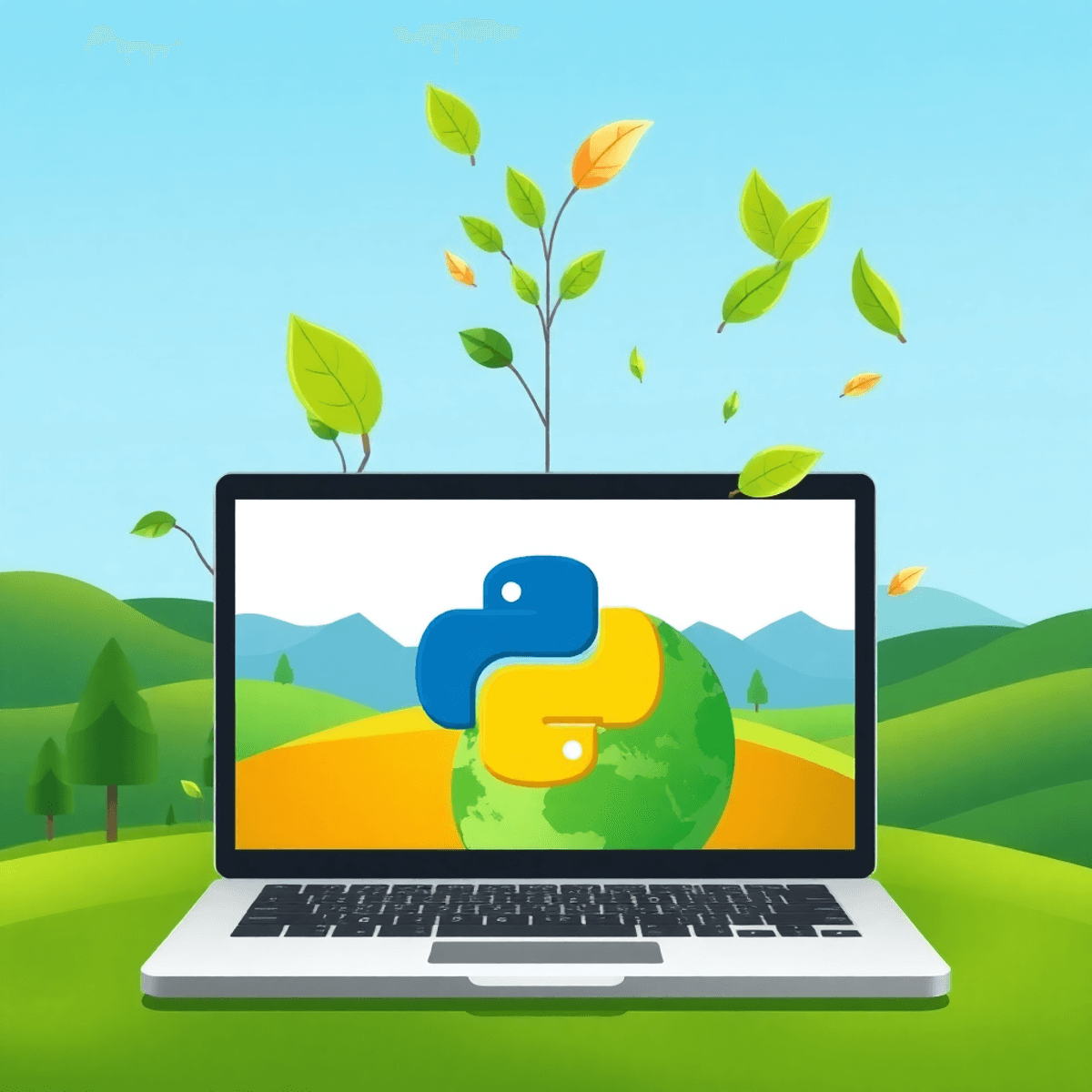
Python's powerful data analysis capabilities allow for accurate measurement and monitoring of environmental metrics in textile recycling operations. With the help of specialized libraries and frameworks, organizations can quantify their sustainability efforts and make informed decisions based on data to minimize their ecological impact.
Key Environmental Analysis Tools in Python:
1. Life Cycle Assessment (LCA) Analysis
brightway2library for comprehensive LCA calculations- Environmental impact assessment across product lifecycles
- Resource consumption tracking and optimization
2. Carbon Footprint Calculation
- Custom Python scripts for GHG emissions tracking
- Integration with carbon accounting frameworks
- Real-time monitoring of carbon reduction initiatives
Data Visualization for Environmental Metrics:
Data visualization plays a crucial role in understanding environmental metrics. Utilizing advanced techniques from the Internet of Things, we can create detailed environmental impact dashboards.
matplotlibandseabornfor creating visualizations- Interactive visualizations using
plotlyfor stakeholder reporting - Time-series analysis of sustainability improvements
Machine Learning Applications:
python
Example: Predictive modeling for environmental impact
from sklearn.ensemble import RandomForestRegressor
def predict_environmental_impact(data): model = RandomForestRegressor() return model.fit(X_train, y_train).predict(data)
Real-Time Monitoring Systems:
Python-based monitoring systems track key environmental indicators:
- Water usage in recycling processes
- Energy consumption patterns
- Waste reduction metrics
- Chemical usage optimization
- Transportation emissions
Impact Assessment Metrics:
- Resource Efficiency
- Material recovery rates
- Energy efficiency ratios
- Water conservation metrics
- Emissions Reduction
- Direct CO2 emissions
- Supply chain carbon footprint
- Transportation impact analysis
Data Integration and Analysis:
python
Example: Environmental data integration
import pandas as pd
def analyze_environmental_metrics(data_sources): combined_data = pd.concat(data_sources) return combined_data.groupby('metric_type').agg({ 'value': ['mean', 'sum', 'std'], 'impact_score': 'sum' })
Automated Reporting Systems:
Python scripts generate automated environmental impact reports:
- Daily performance metrics
- Monthly sustainability achievements
- Quarterly environmental compliance reports
- Annual sustainability benchmarking
These analytical tools enable organizations to:
- Identify areas for environmental improvement
- Track progress toward sustainability goals
- Optimize resource allocation
- Demonstrate regulatory compliance
- Support decision-making with data-driven insights
The implementation of Python-based environmental analysis tools creates a robust framework for continuous improvement in textile recycling operations. These systems provide actionable insights that drive sustainable practices and support the transition to circular textile economy models.
Moreover, integrating these Python tools with advanced AI methodologies, as outlined in the CMS AI Playbook, can further enhance the effectiveness of these environmental analyses
Educational Initiatives on Circular Fashion Through Technology

Consumer education is crucial for the transformation of sustainable fashion. Python-powered educational platforms create interactive learning experiences that bridge the knowledge gap between sustainable practices and consumer behavior.
1. Digital Learning Platforms
- Interactive websites built with Python frameworks like Django and Flask deliver personalized learning experiences
- Real-time visualization of textile waste impact using Python libraries
- Gamified educational modules tracking personal consumption patterns
- Virtual textile recycling simulations demonstrating circular processes
2. Data-Driven Consumer Engagement
Python applications enable brands and organizations to:
- Track consumer learning progress through custom metrics
- Analyze engagement patterns with educational content
- Adapt content delivery based on user preferences
- Generate personalized sustainability recommendations
3. Mobile Applications for Responsible Consumption
Python-based mobile apps empower consumers with:
- Barcode scanning for garment sustainability ratings
- Product lifecycle information access
- Recycling location finders
- Personal carbon footprint calculators
4. Social Learning Communities
Python facilitates the creation of:
- Online forums for knowledge sharing
- Peer-to-peer learning networks
- Expert-led virtual workshops
- Community challenges and initiatives
5. Interactive Educational Tools
Advanced Python tools enhance learning through:
- 3D visualization of textile recycling processes
- AR experiences showing garment lifecycle
- Machine learning-powered fabric identification guides
- Interactive supply chain maps
6. Impact Measurement Systems
Educational platforms integrate:
- Progress tracking dashboards
- Achievement recognition systems
- Community impact visualizations
- Personal sustainability goals monitoring
7. Corporate Training Programs
Python-powered platforms support:
- Employee education on circular fashion principles
- Supplier training modules
- Retailer certification programs
- Industry-specific learning paths
These technological solutions create meaningful connections between consumers and sustainable fashion practices. Python's versatility enables the development of sophisticated educational tools that adapt to diverse learning needs and preferences. The integration of data analytics helps measure the effectiveness of educational initiatives and guides continuous improvement in consumer engagement strategies.
The combination of interactive learning experiences and real-time feedback mechanisms strengthens consumer understanding of circular fashion principles. These educational initiatives drive behavioral change and foster a community of informed, responsible consumers who actively participate in circular textile recycling efforts.
Conclusion: Embracing Technology for a Sustainable Future in Fashion Industry
The integration of Python programming in circular textile recycling marks a transformative shift in the fashion industry's approach to sustainability. This powerful programming language has demonstrated its capacity to revolutionize key aspects of textile recycling:
Data-Driven Decision Making
- Advanced analytics for precise waste management
- Real-time supply chain monitoring
- Predictive modeling for recycling optimization
Automation Excellence
- Streamlined sorting processes
- Enhanced material identification
- Improved resource allocation
The implementation of Python-based solutions has created tangible impacts across the textile recycling ecosystem:
"Python's versatility in handling complex data structures and machine learning capabilities positions it as a cornerstone technology for advancing circular fashion initiatives"
The future of circular textile recycling hinges on technological innovation, with Python leading the charge in several critical areas:
Supply Chain Innovation
- Blockchain integration for transparency
- IoT device connectivity
- Real-time tracking systems
Waste Reduction Strategies
- AI-powered sorting mechanisms
- Automated quality assessment
- Precision recycling protocols
The fashion industry stands at a pivotal moment where technology and sustainability converge. Python's role in this transformation extends beyond mere programming capabilities - it represents a fundamental shift toward data-driven sustainability practices.
Key Future Developments:
- Advanced material recognition systems
- Integrated recycling ecosystems
- Automated sorting facilities
- Predictive maintenance protocols
- Enhanced quality control measures
The success of circular textile recycling initiatives depends on continued technological advancement and industry-wide adoption. Python's accessibility, versatility, and robust community support make it an ideal platform for developing sustainable solutions.
Impact Metrics:
- Reduced landfill waste
- Increased recycling efficiency
- Improved resource utilization
- Enhanced supply chain transparency
- Strengthened sustainability practices
The fashion industry's commitment to sustainability, powered by Python-based solutions, paves the way for a circular economy where waste becomes obsolete and resources are perpetually renewed. This technological revolution in textile recycling represents not just an environmental imperative but a business opportunity that aligns profit with planet preservation.
The future of fashion lies in the harmonious blend of technology and sustainability. Python's role in enabling this transformation underscores its significance as a catalyst for positive change in the textile industry. As we advance, the continued development and implementation of Python-based solutions will remain crucial in achieving a truly circular fashion economy.
FAQs (Frequently Asked Questions)
What is circular textile recycling?
Circular textile recycling refers to the process of reusing and recycling textiles in a way that minimizes waste and maximizes resource efficiency. It is a key component of the circular economy, aiming to reduce textile waste through sustainable practices.
How can Python enhance supply chain traceability in textile recycling?
Python can be utilized to implement tracking systems that monitor the lifecycle of textiles throughout the supply chain. By leveraging data analytics, organizations can achieve greater transparency and accountability, leading to more sustainable sourcing and waste reduction.
What are some challenges faced in traditional textile recycling methods?
Traditional textile recycling methods often encounter challenges such as inefficient sorting processes, lack of traceability, and limited data management capabilities. These issues hinder effective waste management and the ability to recycle materials effectively.
How does machine learning contribute to fabric identification for recycling?
Machine learning models developed using Python can significantly improve fabric identification accuracy. By employing image recognition techniques, these models can classify different fabrics, facilitating better sorting processes and enhancing recycling outcomes.
What role do collaborations play in advancing circular textile recycling initiatives?
Collaborations with organizations, municipalities, and brands are crucial for developing effective collection strategies and community engagement efforts. Partnerships help streamline recycling initiatives and promote widespread participation in circular textile practices.
Why is consumer education important in promoting circular fashion principles?
Educating consumers about circular fashion principles is essential for fostering responsible consumption habits. By raising awareness about sustainable practices and the benefits of circularity, consumers can make informed choices that support eco-friendly initiatives in the fashion industry.
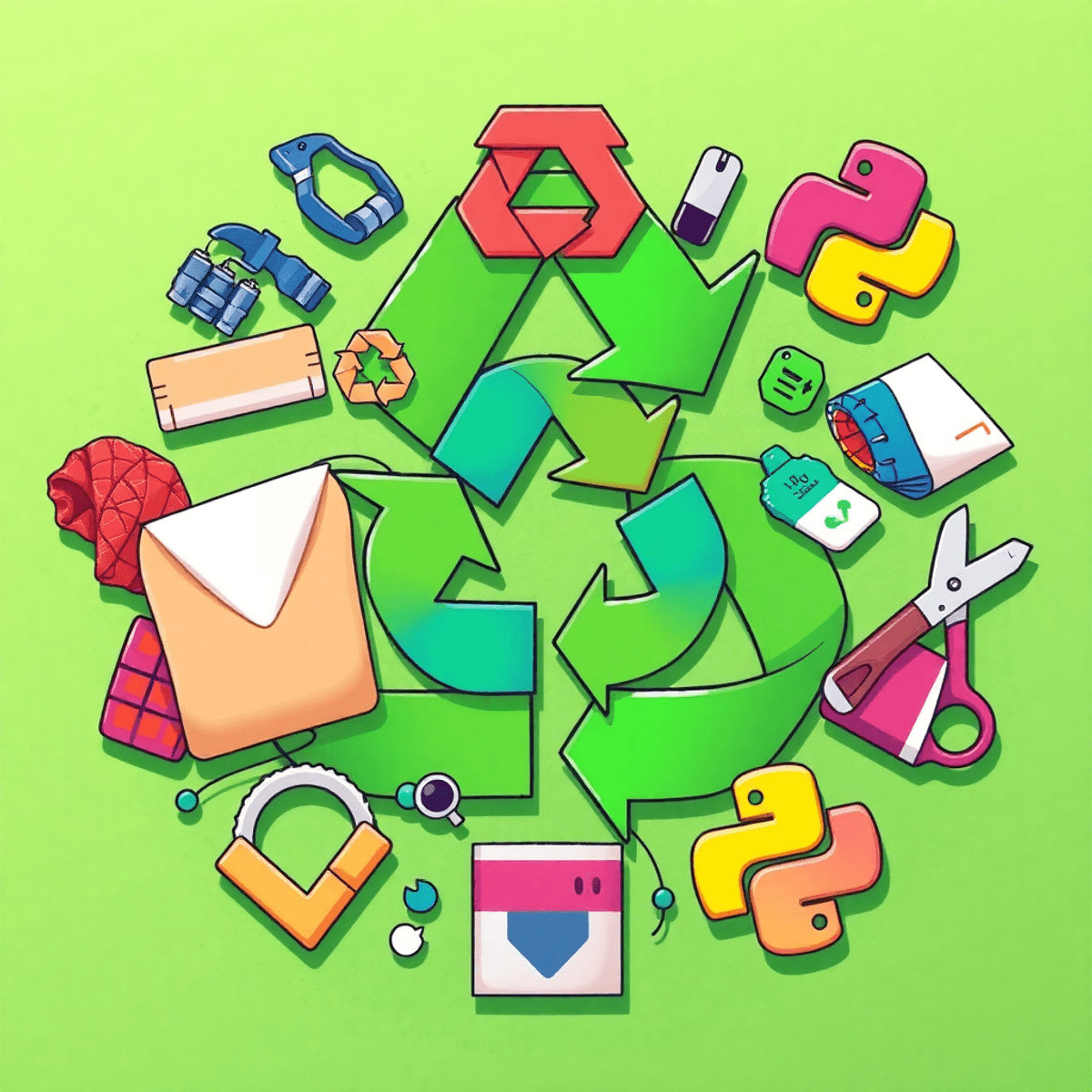
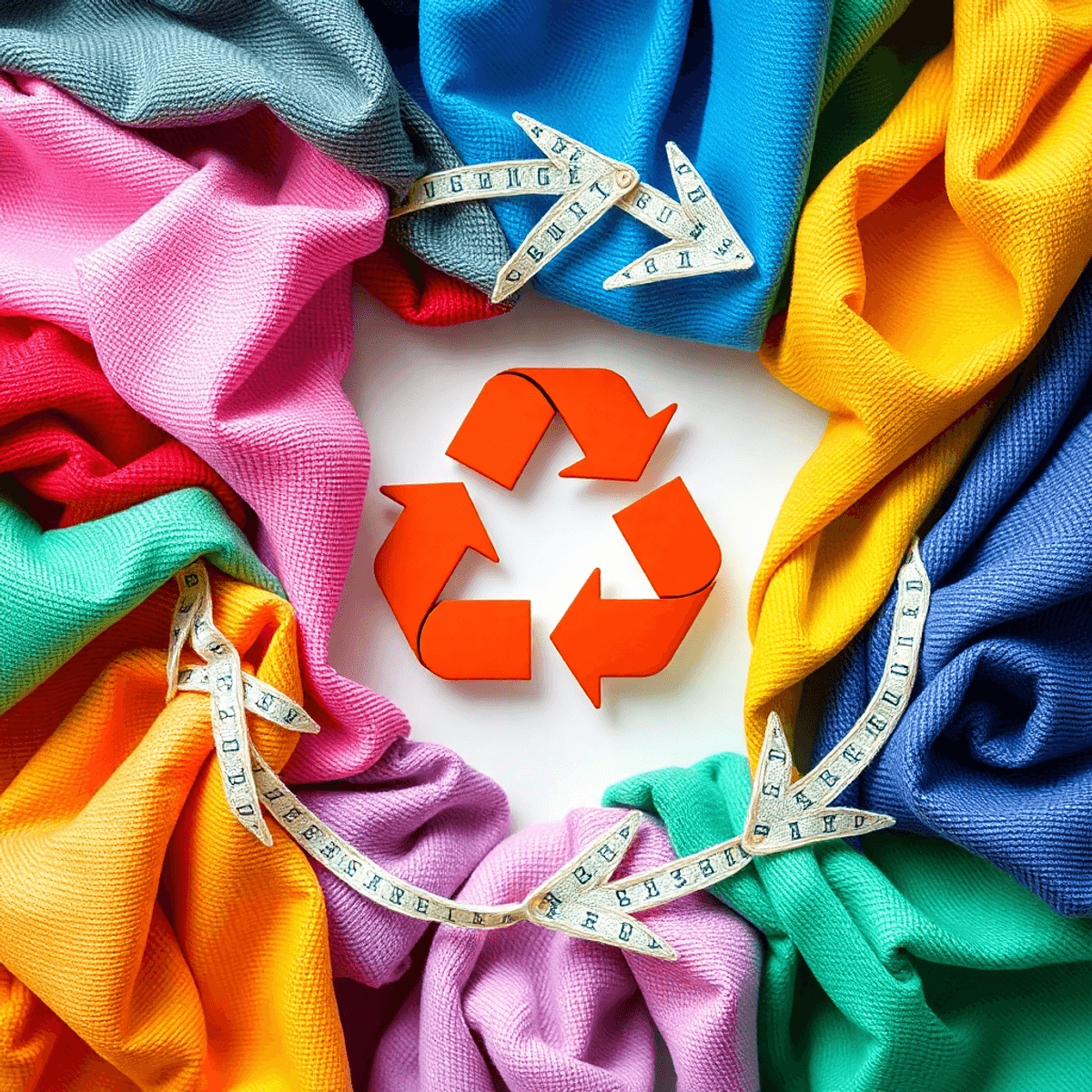

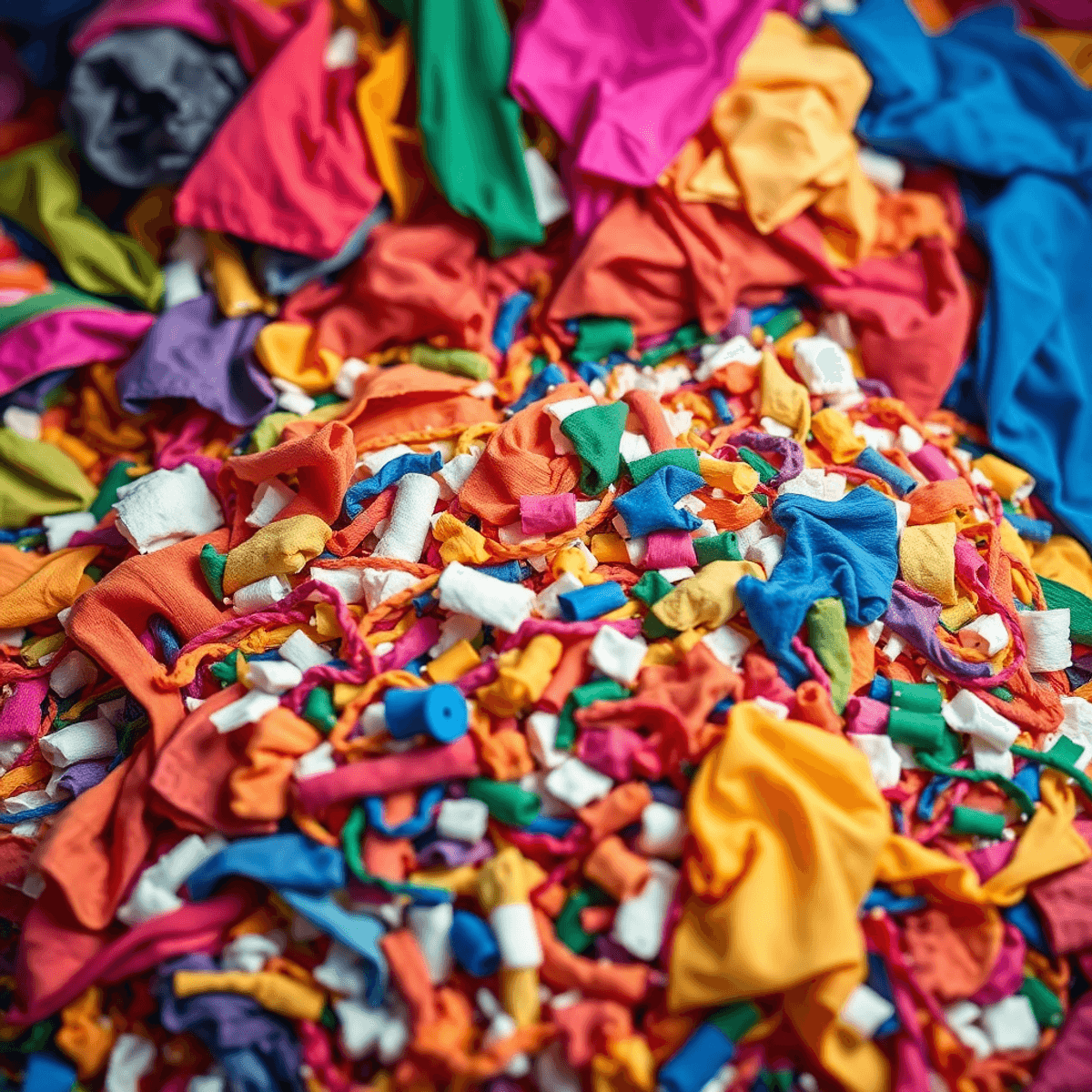


Comments
Post a Comment